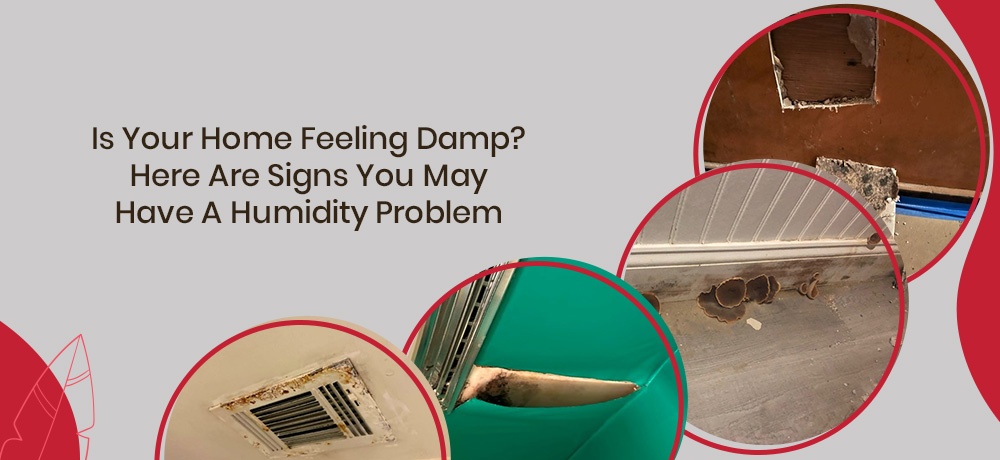Is Your Home Feeling Damp? Here Are Signs You May Have A Humidity Problem

Imagine coming home after a long day, only to be greeted by an uncomfortable and damp environment. The air feels heavy, and you notice a musty smell lingering in the rooms. These signs could indicate that you have a humidity problem in your home. High humidity levels not only affect your comfort but can also lead to more serious issues like mold growth and poor indoor air quality. In this blog, we’ll explore the signs that suggest you may have a humidity problem and offer some insights on how to tackle it effectively. So, keep reading to discover how you can create a healthier and more comfortable living space for yourself and your family.
The Effects of High Humidity
Excess humidity in your home can cause a range of problems. It often becomes more noticeable during the high-humidity months, but it can occur at any time of the year. One of the most concerning issues is the growth of mold on surfacing materials, which can compromise the air quality inside your home. If you or your family members are sensitive, you may experience symptoms like sore throat, headaches, tiredness, and general malaise. These symptoms can occur suddenly when your immune system is overwhelmed or gradually as your body tries to defend itself.
Assessing the Situation
To tackle a potential humidity problem, it’s essential to assess the situation accurately. A quick inspection of your household surfaces can provide valuable information about the functioning of your HVAC system and help determine if you need a dehumidifier to combat seasonal changes. Start by examining your windows—do you notice any condensation on the inside glass? Additionally, check your vent louvers, if you have them, for signs of darkness or rust. These could be indications of elevated moisture in the air or mold growth on the vent grids. If you have exposed, uninsulated ductwork, inspect the surfaces for dampness. Condensation on the ducts can affect adjacent materials and potentially lead to mold growth. In such cases, it’s strongly recommended to insulate the bare mechanical systems.
Taking Action
Now that you’ve identified the signs of a humidity problem, it’s time to take action and improve the air quality in your home. While there are DIY methods to reduce humidity temporarily, such as using fans and opening windows, it’s crucial to address the root cause to achieve long-term results. Consider reaching out to professionals who specialize in environmental testing and consulting services. They have the expertise and equipment to assess your indoor environment comprehensively and recommend appropriate solutions tailored to your specific needs.
Excessive humidity can create a host of problems in your home, from mold growth to compromised air quality. By being aware of the signs of a humidity problem, you can take proactive steps to improve your living environment. If you suspect a humidity issue, a visual inspection of your surfaces can offer valuable insights. However, to ensure a thorough assessment and effective resolution, it’s best to consult experts in environmental testing and consulting services.
Remember, your home should be a sanctuary, a place where you can relax and breathe easily. Let us help you create a healthier and more comfortable living space for you and your loved ones. Don’t let humidity dampen your spirits—take action today!
At GEO Environmental Co., Inc., we specialize in asbestos, mold, and air quality testing and inspection services. Our team of experienced professionals can help you identify and tackle any challenges you may be facing with humidity in your home.
Get in touch with us today!
To learn more about the services we offer, please click here. To get in touch with us, please click here or give us a call at
(914) 962-1086.